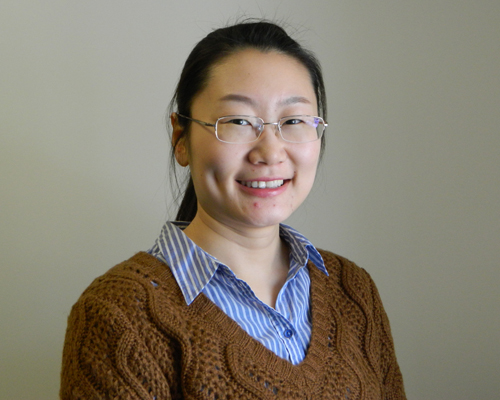
Emily Chiang loved her work as a process engineer for the mining industry. “I was passionate about extractive metallurgy technologies and the prospect of their global impact.” Her job also offered her opportunities to work internationally. She spent seven months in Indonesia, for example, helping with process expansion for the mines in that country.
But it was that close-up experience that gave her a very different perspective on mining and its effects. “When I travelled to the sites, I saw what a problem metallurgical waste and waste disposal presented for the people in the communities nearby,” says Chiang, a new professor in the School of Engineering. “When a mine is abandoned, it leaves the locals jobless with heavily polluted lands. Often these mines are in developing countries where they don’t have the resources to recover from the situation they are left with.”
Chiang wanted to do something about that. Originally from Shanghai, she moved to Hong Kong with her family at age 14 and then came to Toronto at 18 to study chemical engineering, earning her bachelor’s and master’s degrees at the University of Toronto.
After five years of working in the mining industry and seeing the challenges of waste management, she relocated to Belgium to earn her PhD in bioscience engineering on the topic of waste valorization, joining the SMaRT-Pro2 (Sustainable Materialization of Residues from Thermal Processes into Products) program.
“There were three universities involved, and we worked together with industry to find ways to turn wastes from mining and other processes into useful products,” Chiang explains. “In Europe, the issues of mining wastes are different than in other parts of the world. Many mines in Europe are already depleted and long abandoned, so they see the residue as a secondary resource.”
One area of Chiang’s work focused on turning the wastes into sorbents that could be used to sequester heavy metals, phosphate and carbon dioxide. She contributed to a project involving a Belgian company that was operating a metal smelter. Over the years, the company had used the waste products from this process to build roads near the factory. That sounded like a good idea at first, but the roads built with waste products were in fact contaminated with heavy metals, which the rain carried into local streams through groundwater.
“Some of these contaminated streams then flowed across the border into neighbouring countries,” Chiang says. “It became a political issue, and our program was asked to get involved.”
The traditional approach to this problem would be to use a single sorbent manufactured in another factory, which can be expensive, Chiang says, and the single sorbent may not extract all the contaminants. Her approach was to use the suitable waste materials and initiate a chemical reaction to convert them into sorbents targeted at different contaminants. “We get these waste materials for free, so the process is very cost-effective,” she says. “And we are able to target a number of different contaminants to effectively clean up the water.”
Some industrial wastes, like slags and ashes, are also hazardous to the environment because they are alkaline. “When these landfill wastes contact the soil, they change the pH – a measure of acidity – making the ground unsuitable for plant life,” says Chiang. At the same time, the carbon dioxide released during many of these industrial processes escapes into the atmosphere and exacerbates the problem of climate change.
Chiang has an innovative solution to both of these issues, based on the fact that carbon dioxide is acidic. By combining the alkaline solid waste with the more acidic carbon dioxide, the solid waste becomes more neutral in pH and safer for plants. At the same time, the carbon dioxide is kept out of the atmosphere.
“In the lab we use high pressure autoclaves to push the carbon dioxide gas into the waste,” she explains. “There is a spontaneous reaction as they combine.”
Another way to look at mining wastes as a secondary resource is to consider the other metals in those wastes, Chiang says. A mining company is typically seeking to concentrate the ore it removes from the ground to extract one metal, such as nickel, and isn’t as interested in the smaller amounts of other metals, such as copper.
But the same process that concentrates the amount of nickel in the ore also makes the copper content more concentrated, making the waste products a potentially good source of copper or other elements. Chiang is currently in the early stages of studying how microorganisms can be used to extract some of these other metals from mining wastes.
“I am interested in changing attitudes,” she says. “I want to convince people that these waste products can be secondary resources and that handling them properly will improve everyone’s life. In Canada right now, we have lots of active mines, lots of natural resources, so we think we don’t have a problem. But that won’t last forever, and we shouldn’t wait until the problems develop — we should be working on solutions now.”
Chiang is equally passionate about her favourite sport: rugby. “It’s played around the world, and you get to know a lot of people. I’ve played in Indonesia and in Canada. When I played in Belgium, we played against teams from the Netherlands and France just because the countries are so close. But it was fun to feel like you were competing internationally,” she says.